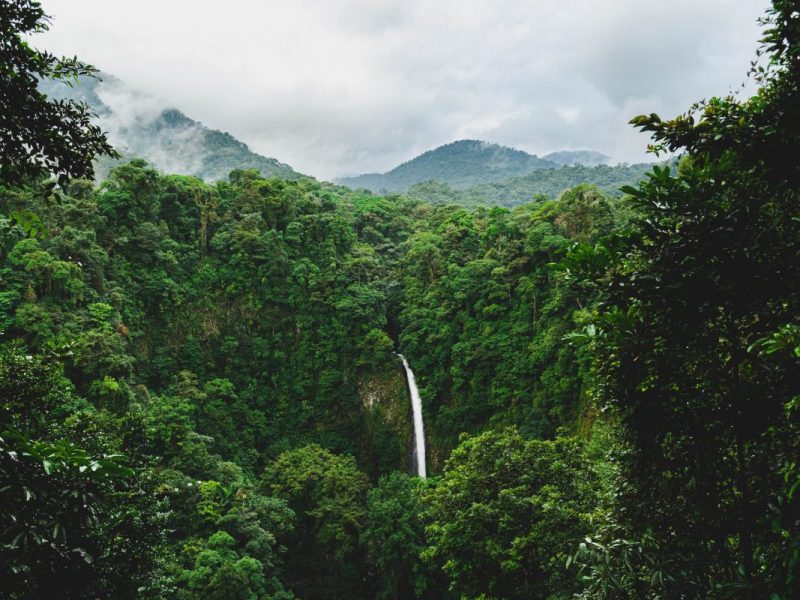Why Live and Invest in Costa Rica?

Happiest country in the world
By many measures, Costa Rica is the happiest country in the world. Ask the people who publish the Happy Planet Index (HPI). In three out of the four rankings released since 2006, Costa Rica was ranked at the very top. The nation comes across as a paradisiacal country according to HPI, ranked high on the three critical factors of Wellbeing, Life Expectancy and the Equality of Income Distribution, along with a low Ecological Footprint. In a recent Gallup Poll, Costa Rica was ranked among the happiest places to live in. This Central American country, with its friendly Ticos (Costa Ricans), has become a haven for a lot of retired Americans. The reason can be directly attributed to the high quality of life for the average resident of Costa Rica compared to other countries.
A Haven for Expats and Retirees


Costa Rica is a Tropical Paradise
While the climate is overall tropical and subtropical, given its position close to the Equator, Costa Rica is one of the most biodiverse spots on the planet. You can go from lush rainforest, to mountain top cloud forest, to beach front paradise in a matter of hours. If you are a nature enthusiast, you can go on Ecotourism or Action Adventure trips in dozens of locations around the country. If you simply love wildlife, rest assured that Costa Rica is a paradise. The beauty of toucans, scarlet macaws and resplendent quetzals, accompanied by the majestic sight of Blue Morpho butterflies, will bedazzle you as you visit one of the rainforests or cloud forests preserves strewn across Costa Rica. Capuchin and howling monkeys, sloths and tapirs, cats and deer, lizards and sea turtles … the list is endless.
Biodiversity everywhere
There are hundreds of species of birds and butterflies coexisting with over 200 species each of mammals and reptiles, and over 125 species of fish. Many species are rarely found elsewhere in the world. In addition, there are some 11,000 species of plants, including over 1400 species of trees. Costa Rica has done everything it can to preserve the biodiversity of its habitats. A quarter of the country is protected by approximately 80 National Parks, Wildlife Refuges, Recreation Areas and Nature Preserves. The country has made a commitment to clean air as well. Costa Rica is trying to be carbon neutral by early this decade and has declared its intention to have a zero-carbon footprint by the year 2050. Unlike promises from many other countries, this one has a real shot at success.


Original Garden of Eden
Costa Rica is a blue zone
The average life expectancy in Costa Rica is 78.5 years, which is higher than the USA. But longevity in Costa Rica’s Nicoya Peninsula is even better – it is one of the five classified Blue Zones in the world, where people routinely live past 100 years.There are many comparable statistics that underscore how Costa Ricans live long and are happy. For example, Costa Rica has often been ranked in the Top 5 in life expectancy – many measures have found that the possibility of a sixty-year old living to age ninety is higher in Costa Rica than most, if not all, other countries in the world. This is great news for an American expat who wants to retire to a tropical spot close to the USA, of course. Surrounded by warm and friendly locals who speak English, and other retired Americans, living in peace and harmony as is the norm in Costa Rica – you will not only live longer, but you can make every day count.


Delicious Food, Entertainment, Wellbeing, Community ...
Education & Healthcare
Tellingly, Costa Rica spends 8% of its GDP on education, a level that is over 60% higher than the USA. Costa Rica also one of the highest rates of educational spending in the world, the country has a 97% literacy rate, highest in the Western Hemisphere.
Costa Rica has a strong healthcare system, bolstered by a government sponsored network of more than 250 clinics and 29 hospitals strewn around the country. This desire to provide high quality care at low costs, with none of the uncertainties surrounding the future of the healthcare that we seem to be facing in the USA, is of particular interest to older Americans.


Nature's Bounty of Food
Costa Rica: Living Pura Vida Style

